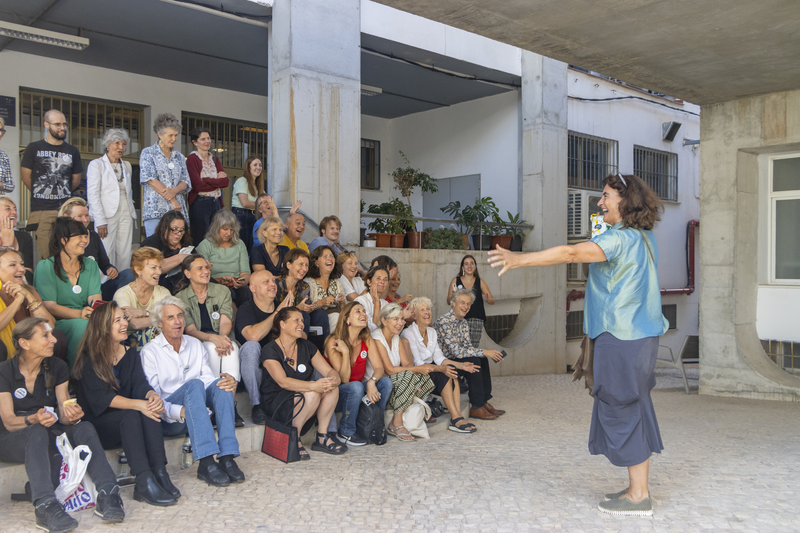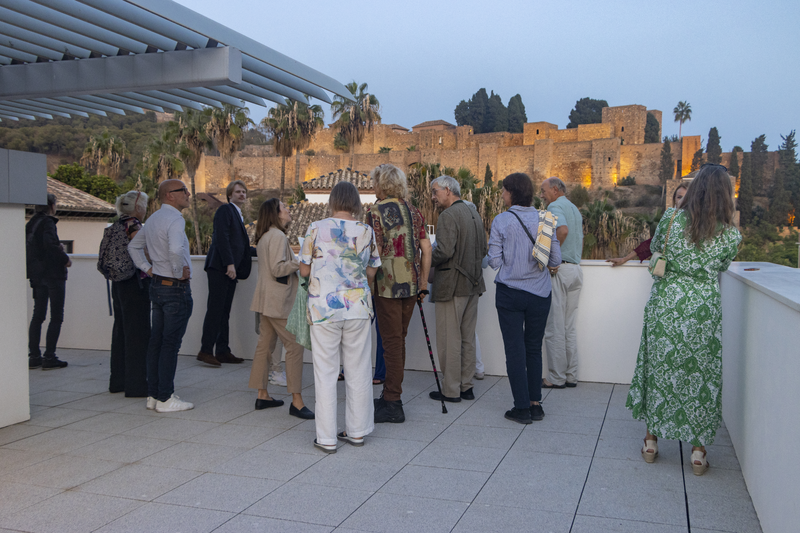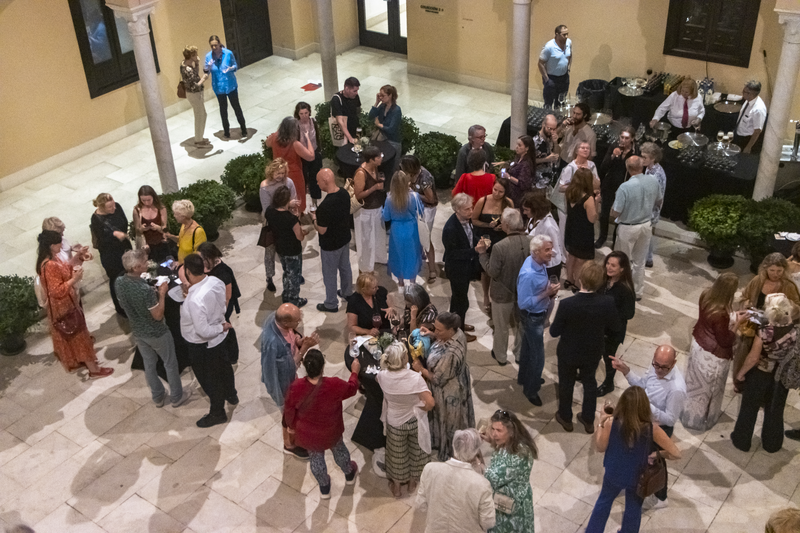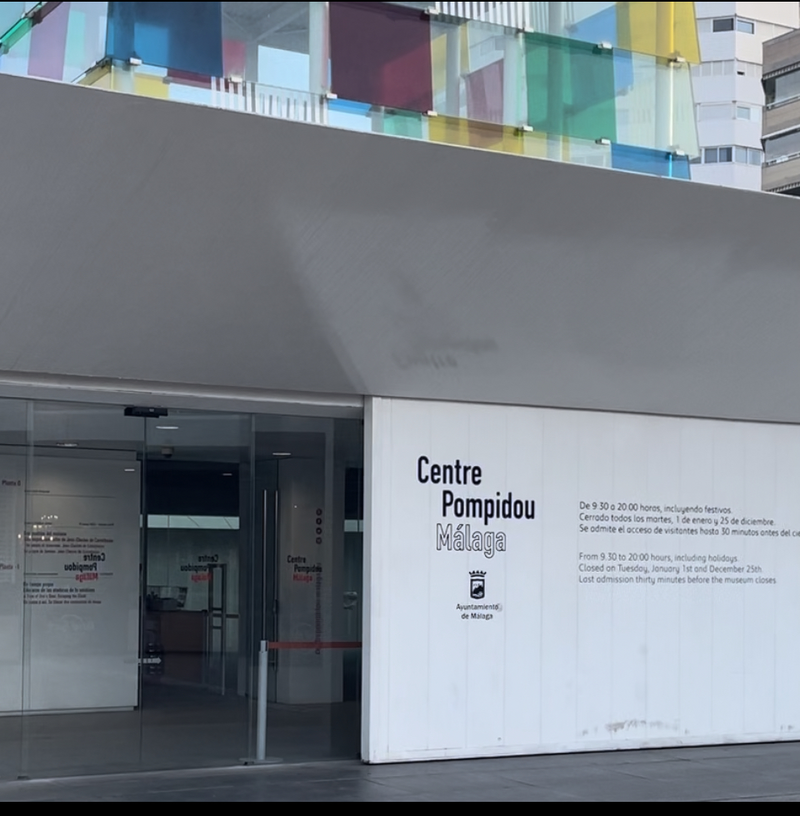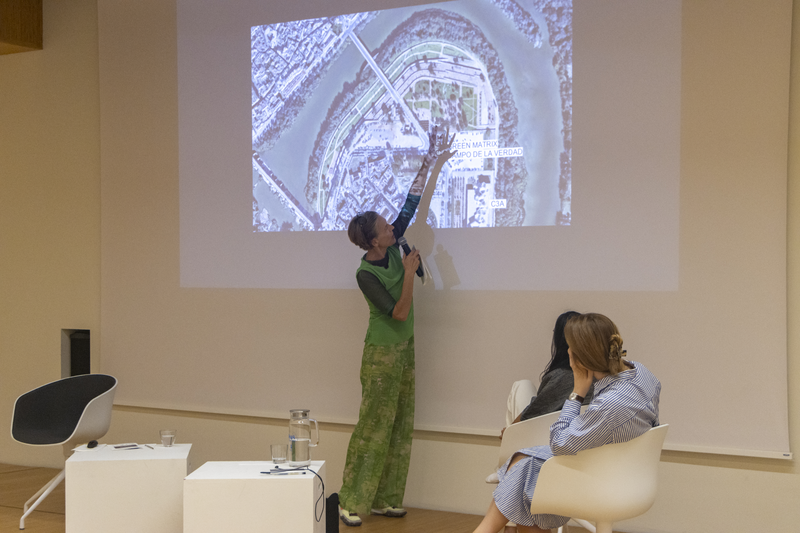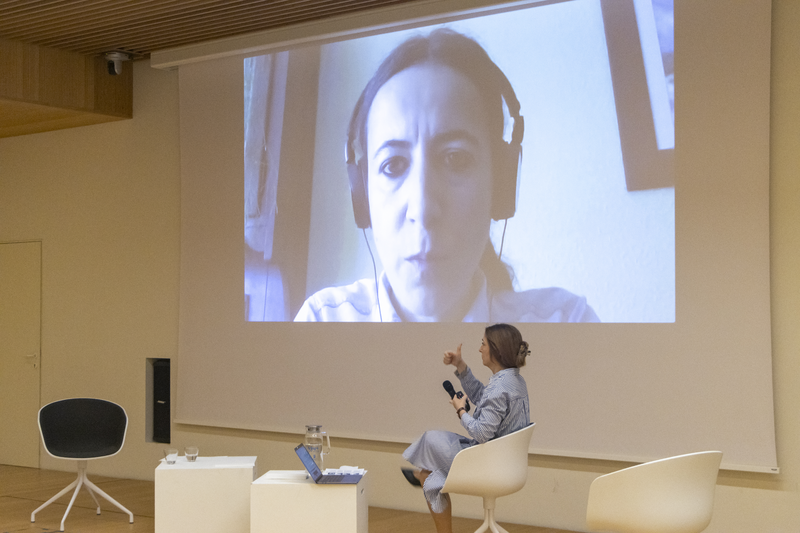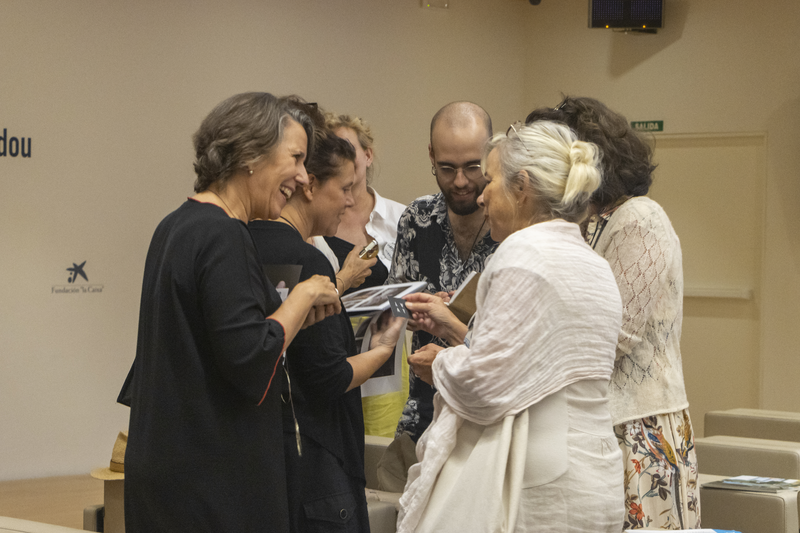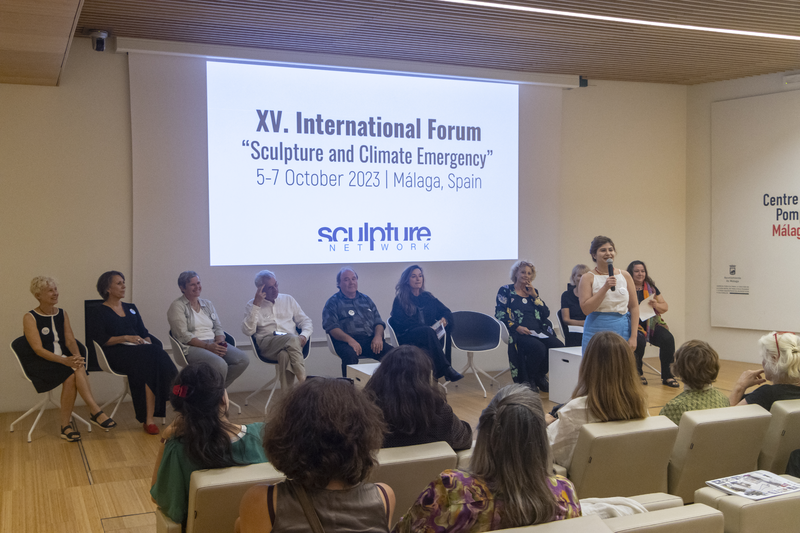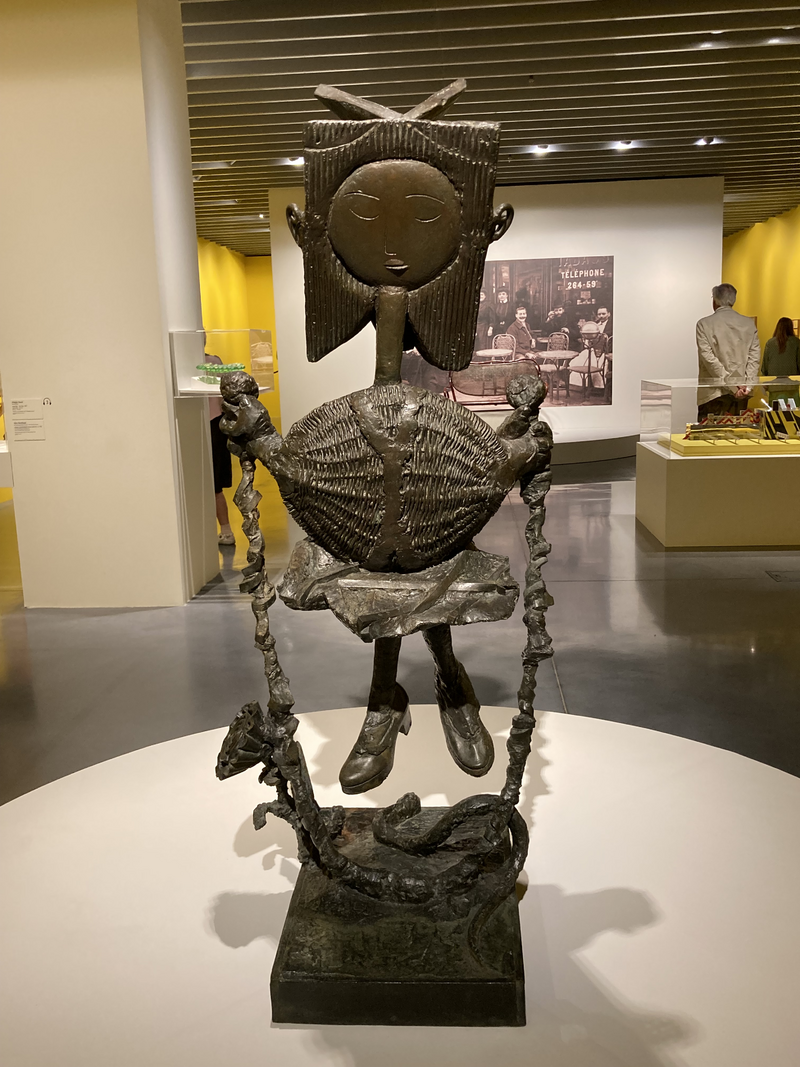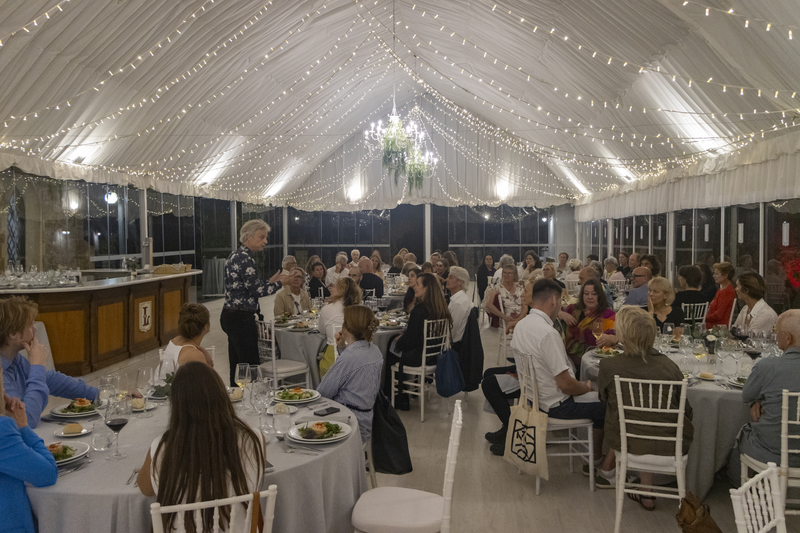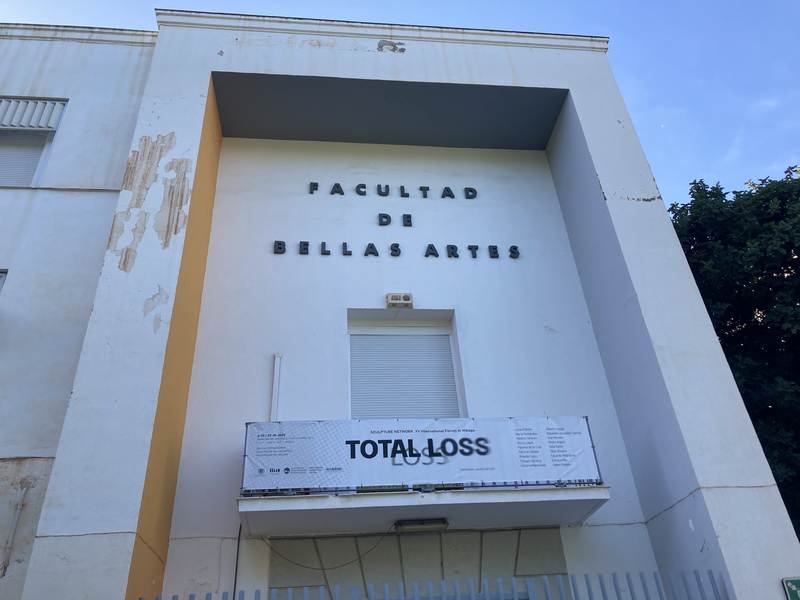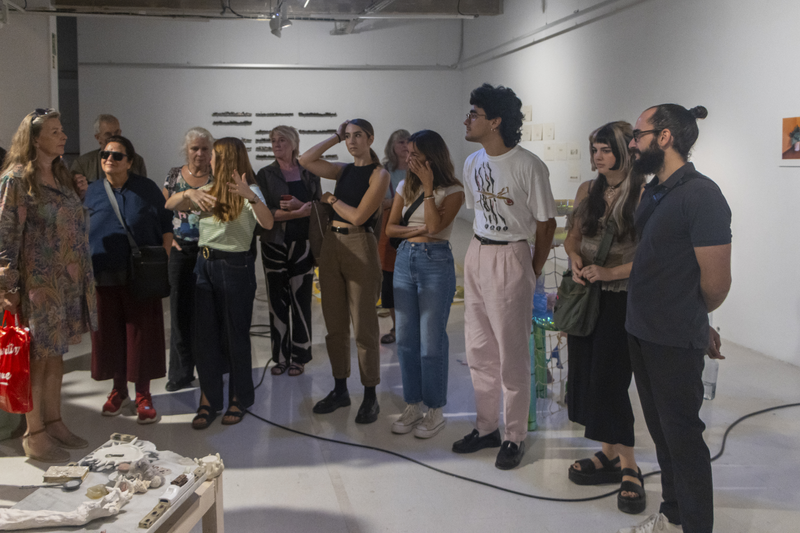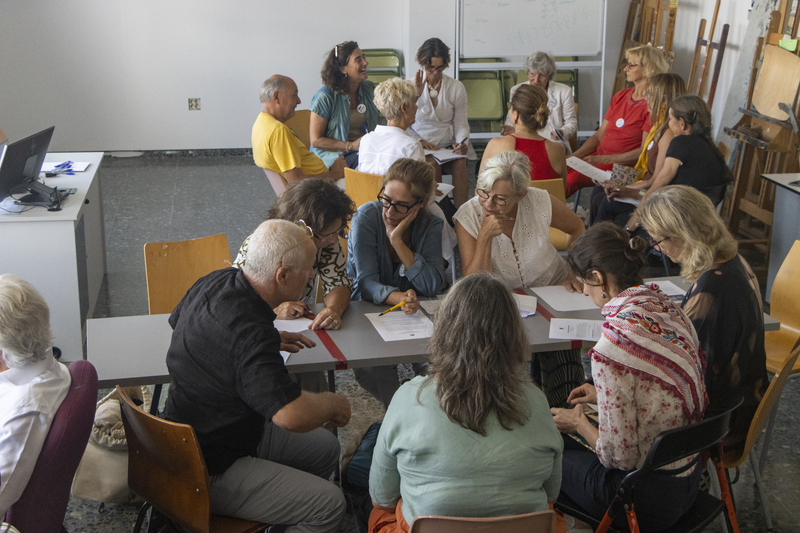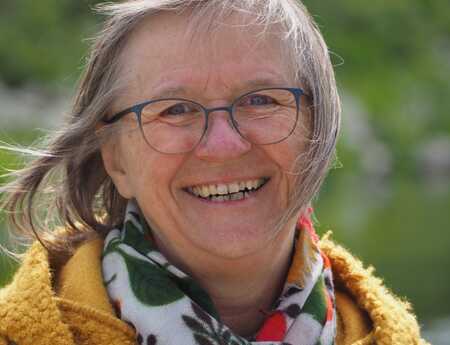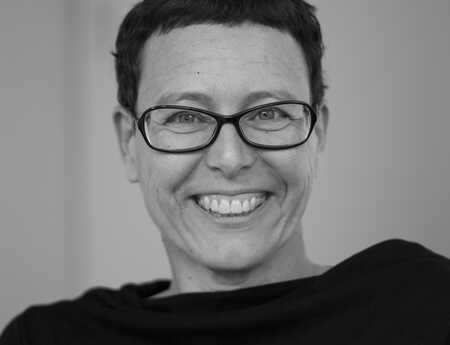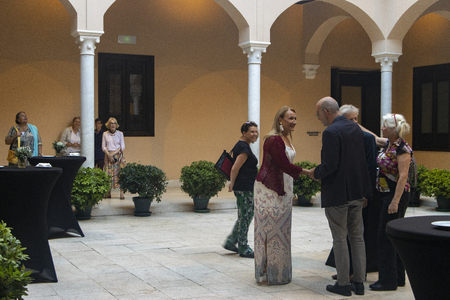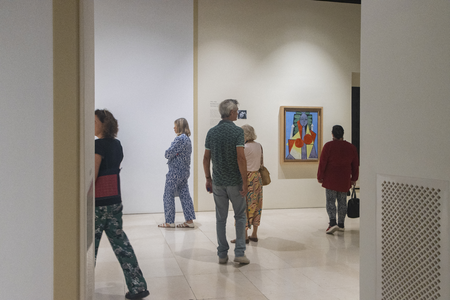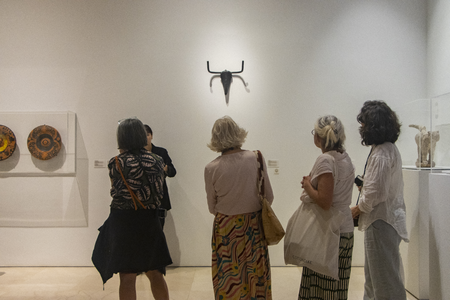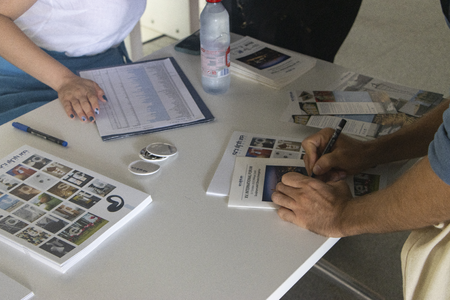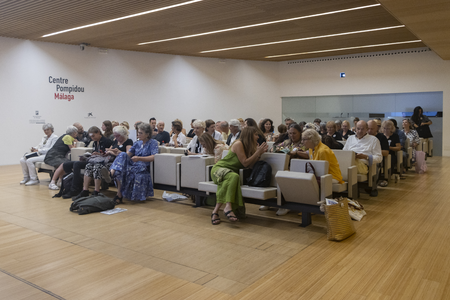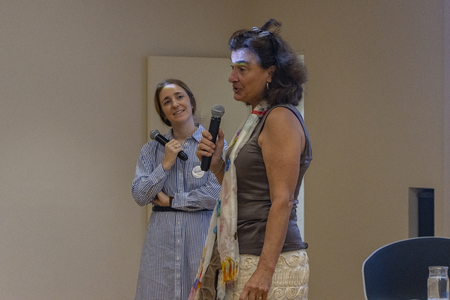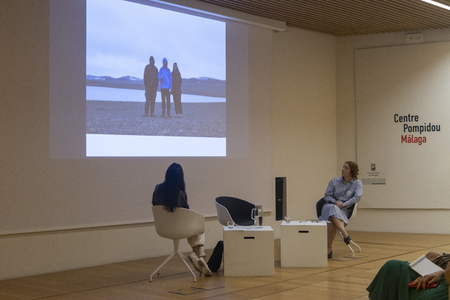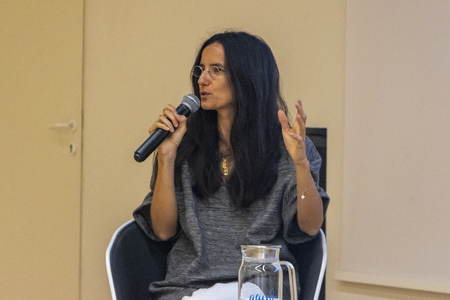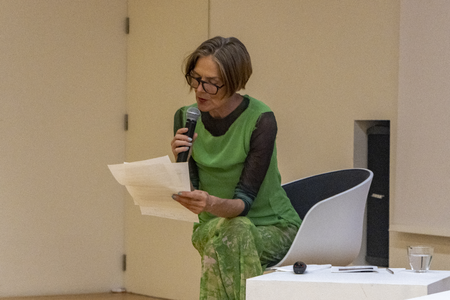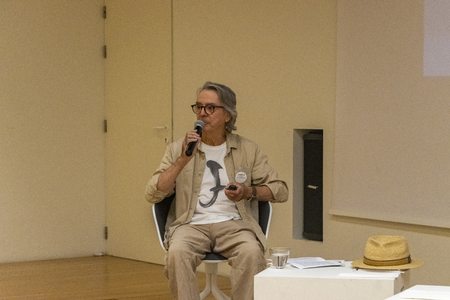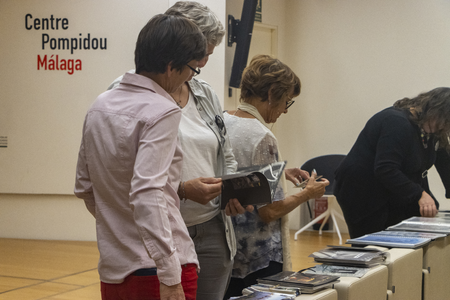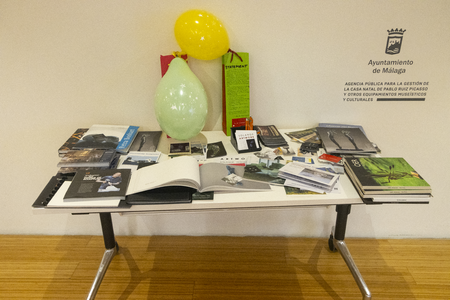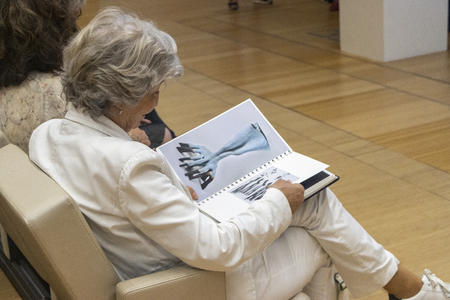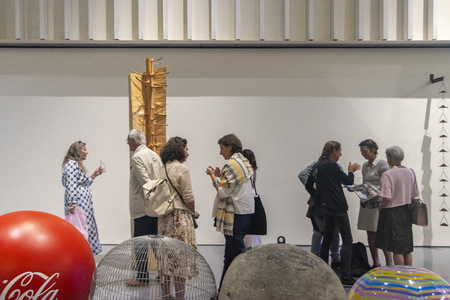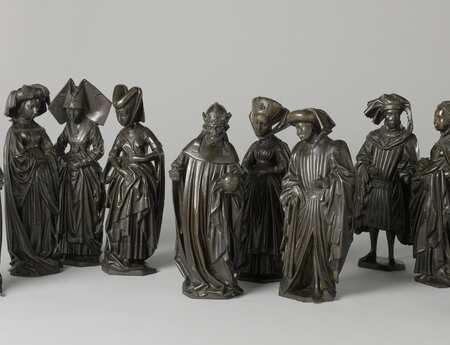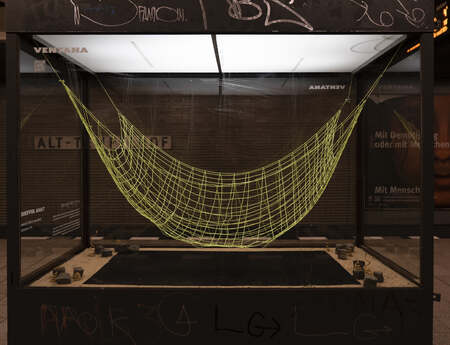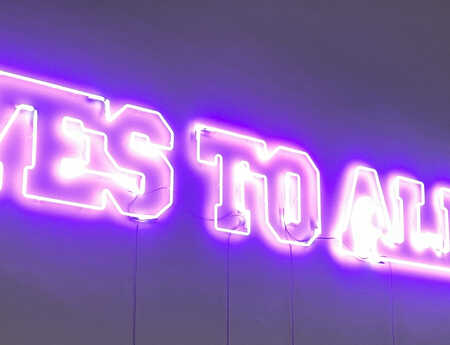Sculpture and Climate Emergency
For three days, artists and art enthusiasts struggled to find answers in Málaga. The city’s atmosphere with its many museums, inspiring lectures and workshops, the warm summer days in October, the community, all contributed to this process.

Day 1: Thursday, 5 October 2023, at the Museo Picasso Málaga
The participants arrive one by one during the evening in front of the Museo Picasso Málaga, and I listen to the bustle of their voices. A little later, for our group only, the impressive wooden door with its massive iron fittings swings open, and Yke Prins, SN Board member and one of the Forum's organisers, invites us all inside. In the inner yard, the director of the museum and Frank Everlein, Chairman of the Board of SN, give us a warm welcome.
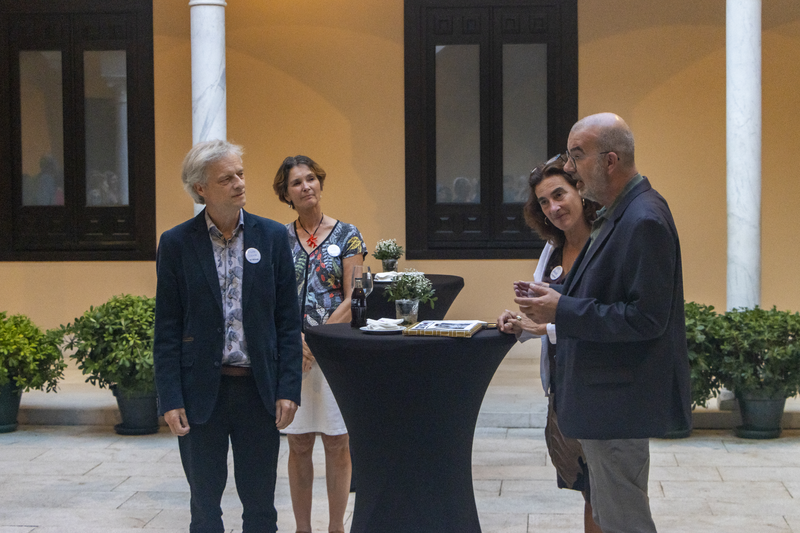
Above us, a square of light blue sky radiates. In a group with Lourdes Navarro, I step up to the terrace, which is only accessible on special occasions. Our view goes out to the Alcazaba, the Castillo, the cathedral, the 300-year-old fig tree in one of the courtyards. Dawn falls – a magical hour.
We immerse ourselves in Picasso's world. It starts with the video in which Picasso draws on glass. I breathlessly follow how he conjures up bull, dove and flowers in rapid strokes. Lourdes Navarro expertly explains it all to us with heart and passion, just as she has been doing for 20 years, ever since the museum first opened. High up on the wall is the sculpture "Cabeza de Torro", a very modern assembly of a saddle and handlebars belonging to a racing bike. I have to bend my head to the back of my neck to look up at it. The sculpture springs back into my mind the next day as we talk about materials used in making art.
We enjoy delightful tapas in the patio. Amidst the intense buzz of voices, I look up at the night sky, reframed by the building like a painting.
Day 2: Friday, 6 October 2023, at the Centre Pompidou Málaga
At 9.30 sharp, the big white sliding door of the Centre Pompidou Málaga opens. The members of the organisational team, Yke Prins, Maria Garcia de Pedro, and Zeynep Ece Sahin Korkan, welcome us. We are now right below the colourful glass cube, the eye-catcher of the museum. On our way to the auditorium, we pass through cool, spacious rooms.
Conversation 1: Leonor Serrano Rivas with Martí Manen
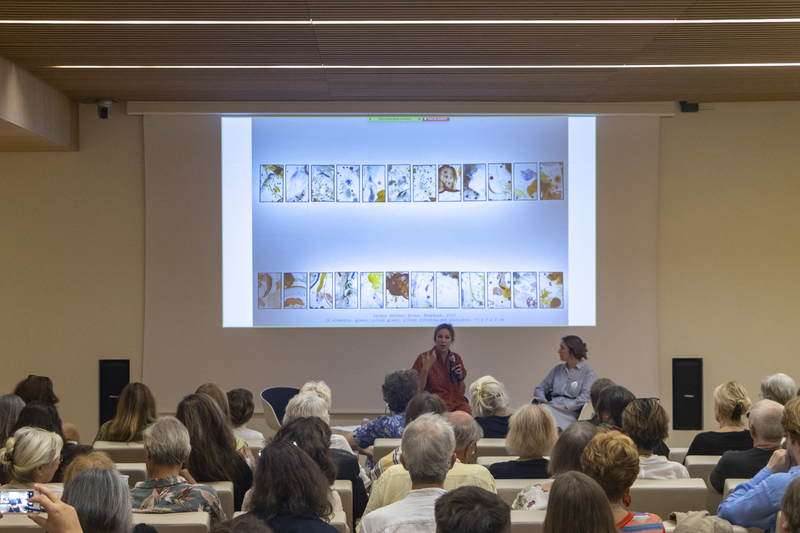
Maria Garcia de Pedro introduces Leonor Serrano. For her work series "stardust", she painted with chemicals on glass, which was treated at differing temperatures in the furnace. The fact that the outcome is not entirely controllable forms part of her artistic concept, as do astrology and astronomical insights into the universe. As I look at the stunning pictures, the thought of the stove's energy consumption creeps in. Is there a price to pay for everything?
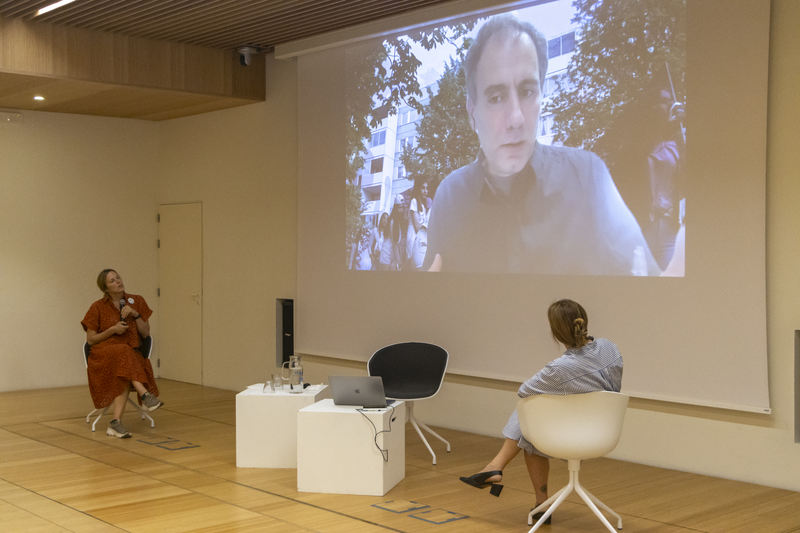
The curator Martí Manen from Sweden joins us via ZOOM. He presents a project from Jönköping. Between 1965 and 1975, one million flats were built there. What sounds encouraging at first glance has developed into a troublesome neighbourhood. The aim of the art project was to get in dialogue with the local people. For the past 16 years, a group of girls has been organising a dance school in a basement. To liven up the space, they painted it purple. As part of the project, the girls carry large purple glass panes through the neighbourhood. "Who cares? Who assumes responsibility?" are the key questions of the project In the conversation between Martí Manen and Leonor Serrano Rivas, a multitude of answers unfolds to the question: What is art able to accomplish?
Conversation 2: Joana Escoval with Daniela Zyman
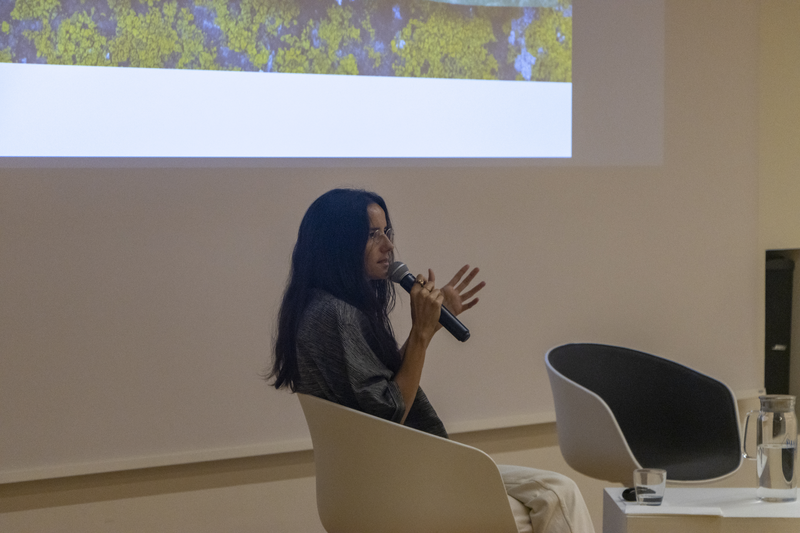
One of her projects Joana Escoval introduces us to, is an experimental exhibition space in the middle of nowhere in Iceland. She was invited to go there and was only given the GPS data. The room was marked by single stones from the surrounding area, no staff, no walls, just a box with a small library buried in the ground. Joana, like all other invited artists, places one of her books in the library. Her delicate, movable metal sculptures, carried by humans, form the exhibition. The artworks, filled with the energy of Iceland, are partially transformed into new sculptures by Joana. The alloys for her works are made entirely by herself. In one sculpture, she assembles individual parts with gold. The alloy oxidises and makes more visible that what combines.
Daniels Zyman, Artistic Director of the museum TBA21, Madrid, speaks with urgency about "Matriz verde" on the Campo de la Verdad in Cordoba. A wasteland, located next to the C3A museum, abandoned to its fate for years. In consultation with the municipality, C3A explored the site and recorded 60 species, a wildlife paradise! Abraham Cruzvillega used the material to create collages. In June 2022, the municipal authorities arrived with bulldozers and turned the paradise into a car park. I am not the only one to stare in shock at the image. "Why didn't someone put a sculpture up in the square, huge and prominent? They wouldn't have dared to destroy it," a participant remarks later on. The square is now laconically called Sector Sur. A setback on the path towards creating more equity through art, in our human community and in the community with nature, of which we form part. Daniela Zyman does not let this discourage her.
During the coffee break, everyone is engaged in intensive discussions.
Conversation 3: Enric Pladeval with Fran Quiroga
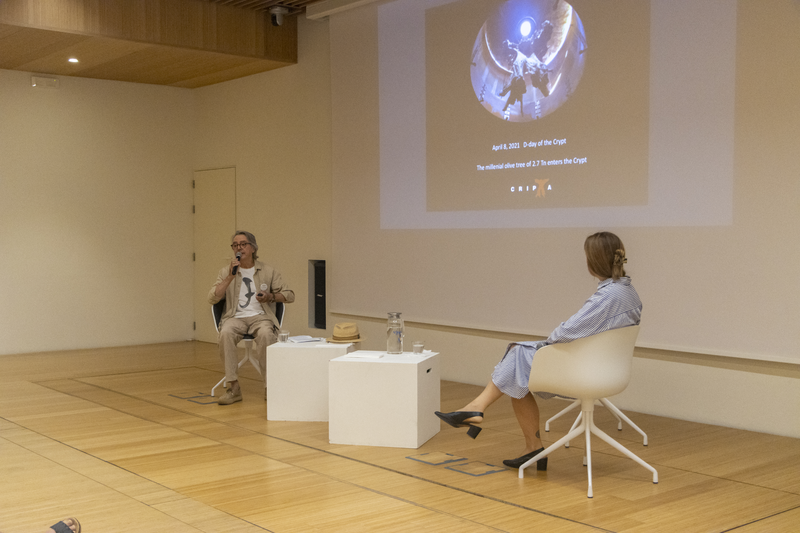
Enric Pladeval whisks us away to his sculpture garden near Barcelona. What impresses me most is the crypt for the olive tree. In small groups, Enric guides the visitors into the artwork. From a balcony that leads around the cylinder, which is embedded in the earth, we look down 7 metres into the water, reflecting an image of the tree hanging in the cylinder with its branches pointing downwards. To which Enric Pladeval comments: "The very least one should expect from an artist is to change the order of things." The tree that stands upside down, that floats instead of being rooted, all of this unsettles our concepts.
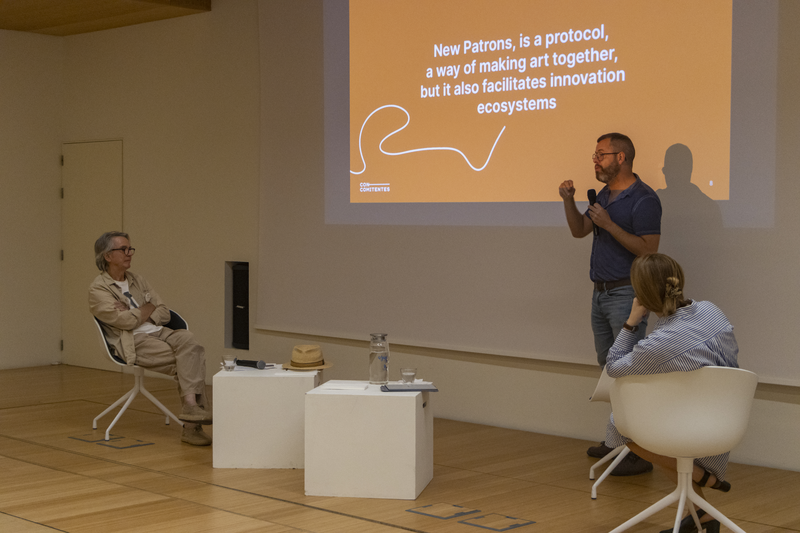
Fran Quiroga works for Concomitentes, an organisation that supports a group of residents in realising a work of art for their community. His concern is the social aspect of art. A medical doctor, for example, has a certain reputation and is respected in society, this is not necessarily true for an artist. He considers himself a mediator in encouraging people to make art together. Art may balance both the needs of our society and those of our environment, he says. I can't help but think of the car park in Cordoba.
Conversation 4: Laia Estruch with Maria Gracia de Pedro
Laia Estruch‘s artworks consist of a material part, the sculpture, and its performance, the public exploration of the sculpture and its body. For her, the artwork is also a body that resonates, that changes through exploration, that gets traces, almost like tattoos. In one of her sculptures, a huge tube, the visitors themselves become part of the artwork by entering it. Laia Estruch says: "When people come out, they have a different perception of reality."
At lunch we are again spoilt with culinary delights. Afterwards, groups of people stand together, hunched over smartphones and catalogues, continuing to weave the Sculpture Network.
At the Roundtable, Maria talks with Leonor Serrano Rivas, Joana Escoval, and Daniela Zyman.
The idea of a cyclical use of materials comes up again: letting go and creating something new. The sea, as a basis of life, working with it in a creative way as an artist, scientist, activist. It is considered hopeful that the EU is developing more awareness for the protection of the environment. For Enric Pladevall, dedicating a crypt to an olive tree is a political statement. And who would disagree with the statement that inspiring people is also a part of being an artist?
Then nine members of SN are each given 90 seconds to talk about their work. Words and images fly past me. Here are some of the things I have fished out:
Irene Aton: Power of the elements.
Sigita Dackeviciute: How does a sculpture make you start reflecting?
Gabriela Drees-Holz: Search for solutions along with everyone.
Boky Hackel-Ward: Rust as a symbol of destruction and light as a promise of transformation.
Elo Liiv: Environmental protection and the community.
Willi Reiche: Aesthetics, humour, upcycling, transformation, illumination or enlightenment.
Johannes von Stumm: Light, space, infinity.
Almudena Torro: Love, freedom – air is the substance of which freedom is made of.
Ann Weber: The infinite possibilities of cardboard, a material that everyone throws away.
During the interplay of questions and answers, new aspects emerge, such as the emotionality of artists' statements. The provocative question: "Why are we so quick to fight and so unwilling to save nature?" resonates in me.
After the coffee break, we have time to explore the museum at our leisure. The sculpture "Nina saltando a la comba", a little girl jumping rope by Pablo Picasso, gives me exactly the feeling of ease I now need after all the many complex topics of the day. Giacometti's woman striding from one room to the next through an open in-between and my own striding through the blue room "I never dream otherwise than awake" by Emmanuel Lagarrigue, the shaping of transitions. How difficult they are, these times of change, and yet also gratifying.
When we board the two buses and drive up into the mountains for dinner, it is already dawn. Countless fairy lights and festively laid tables await us. Frank Everlein talks about SN's past, present, and future and invites us to take part. We then indulge in good food and relaxed conversation. In the dark, we drive back into the city's sea of lights.
Day 3: Saturday, 7 October 2023, at the Facultad de Bellas Artes de Málaga
Caitlin Southwick shares insights related to her work at KI Culture, a non-profit association that aims to connect culture and sustainability. She pleads for transparency and awareness.
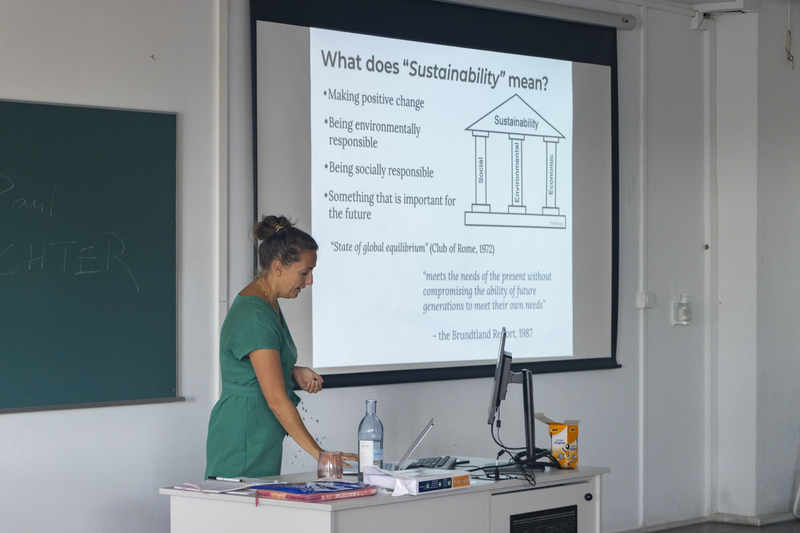
Afterwards, five young artists from the Facultad de Bellas Artes de Málaga introduce us to the works in the exhibition "Total Loss", created by 18 young artists for the Forum. A table installation with gathered objects, a sarcophagus with a video for the macho, a series of prints, an installation of objects from a study, instructions for connecting two people with a performance and a fictitious surveillance station show the wide range of the young people's artistic work, which was rewarded with great applause.
After a short coffee break and a chance to take a deep breath, the tour continues.
The following two workshops, moderated by Caitlin Southwick and Moira Mazzotta from KI Culture, are booked to capacity. Caitlin Southwick's group explores how artists might shape a more sustainable future through the way in which they work. Many are concerned about materials, about pollution, but Caitlin points out that electricity and transportation have a more significant impact. Although the future is viewed rather critically by many, there is a great willingness to do something, not to give up, to choose from this infinite number of possible futures.
After an intensive time together, it is time to say goodbye. But the strings are woven.
